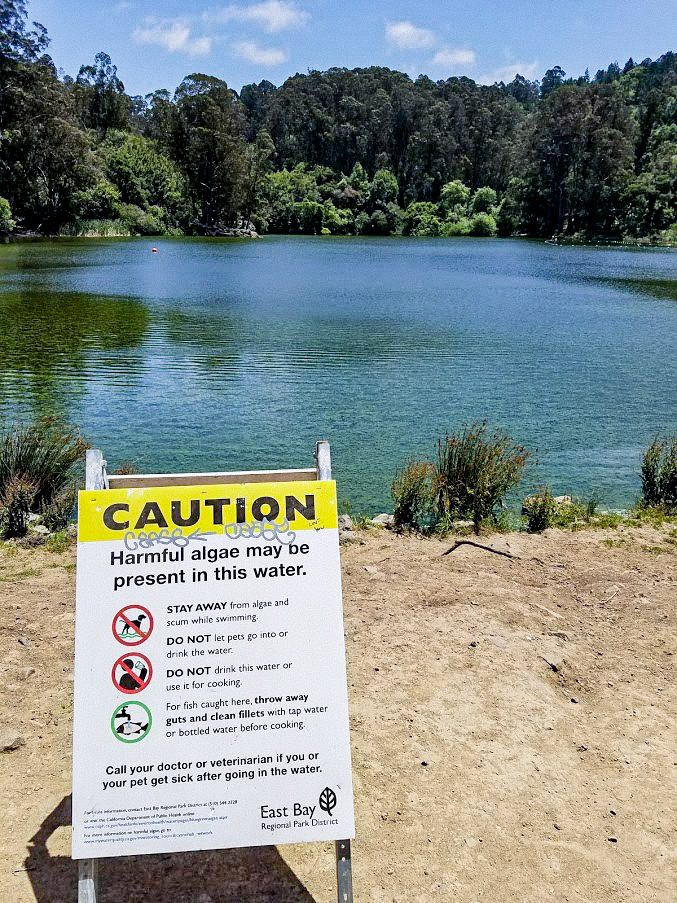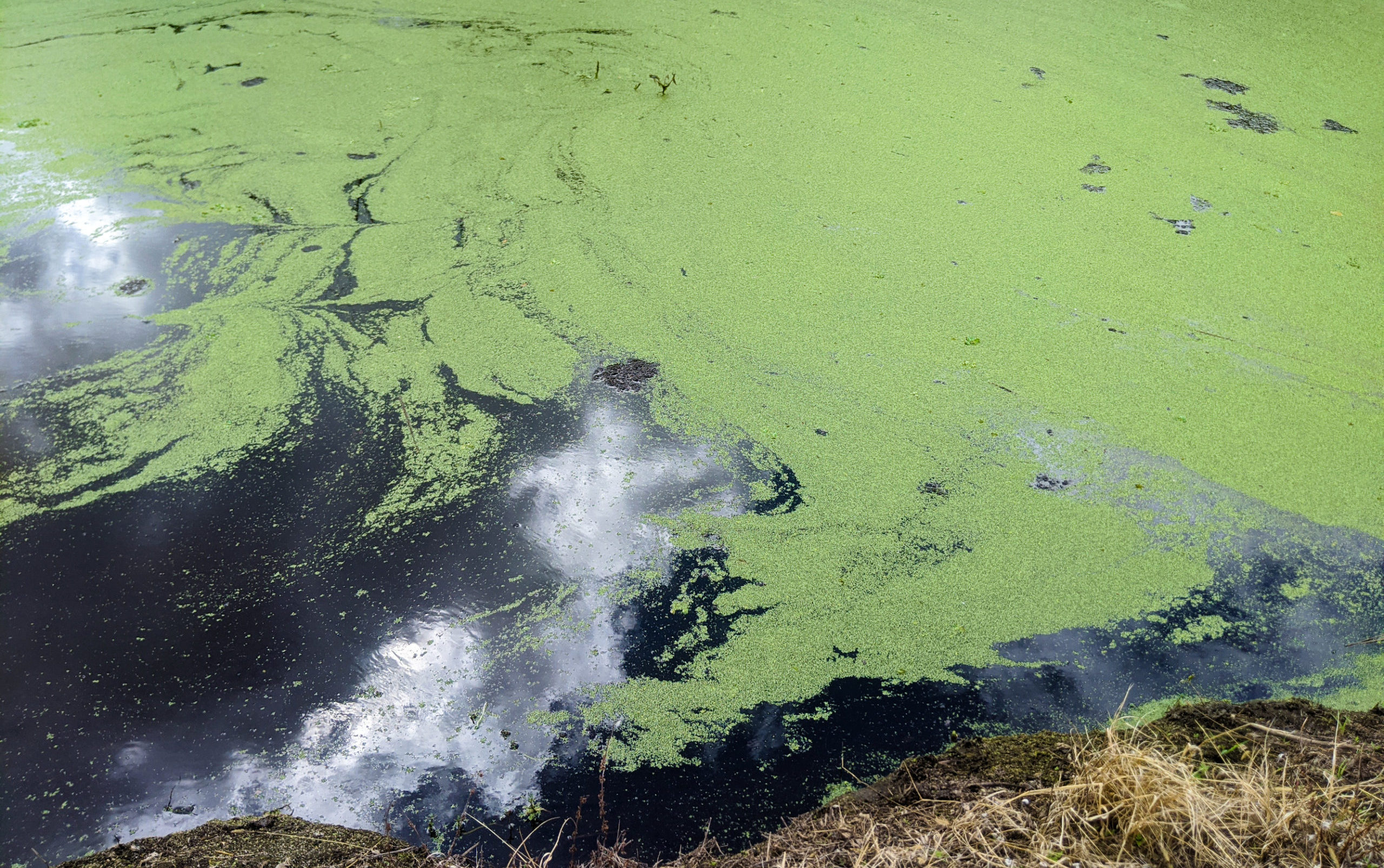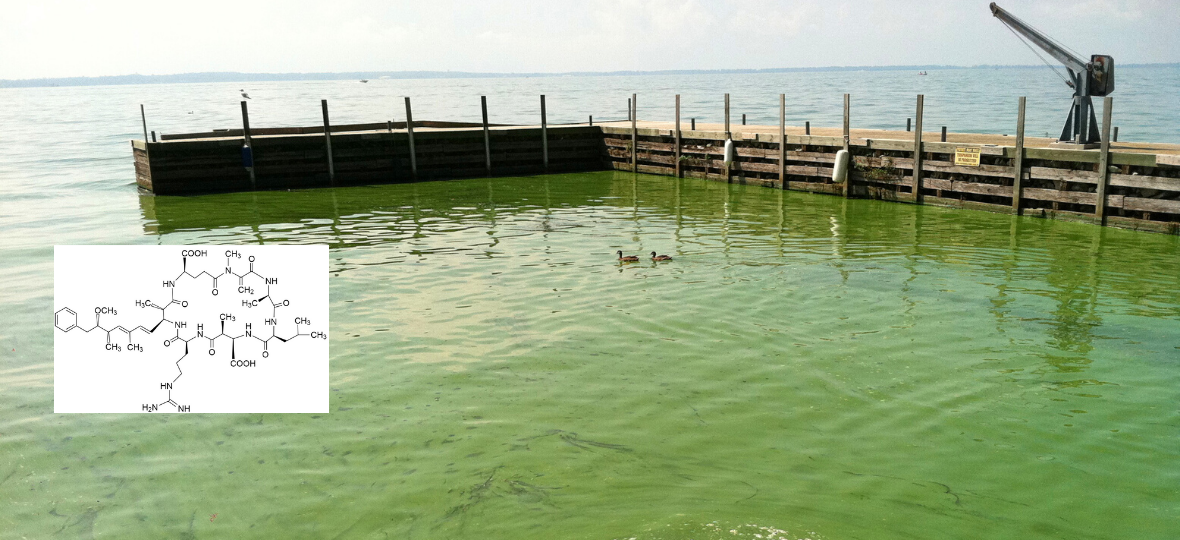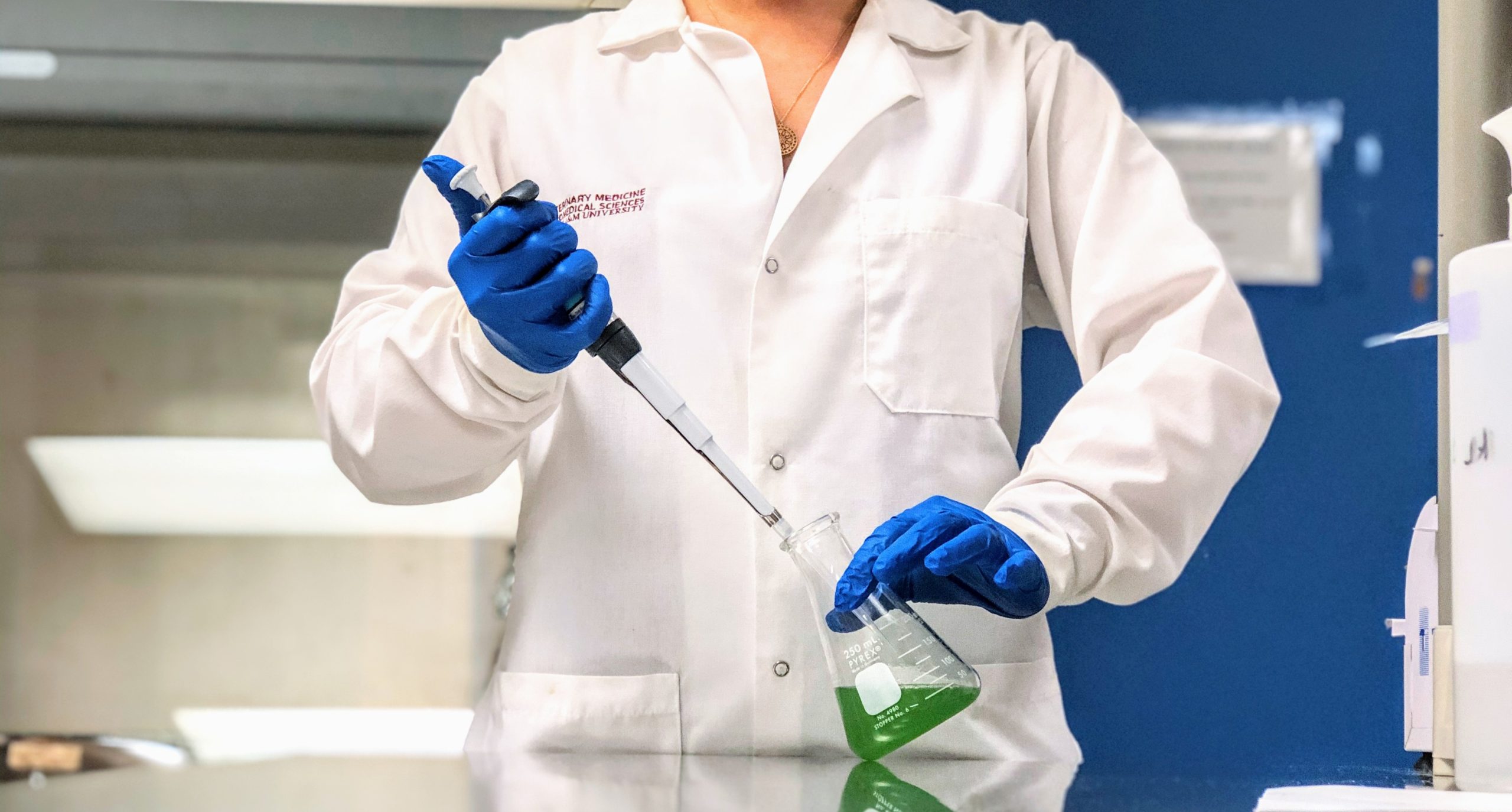You have probably heard the term harmful algal blooms (or HABs) used in the news. These stories may be accompanied by pictures of a lake with thick green goo on the surface. These blooms are often considered harmful because the organisms responsible for them produce toxins that can poison humans, pets, livestock, and wildlife.
What are they?
Despite the name, freshwater harmful algal blooms are not usually algae. More commonly, the green stuff is a type of bacteria called cyanobacteria. Cyanobacteria look similar to algae because they can both photosynthesize. This means that they are able to create energy from sunlight – similar to plants – and in return, release oxygen into the atmosphere. They appear green because of pigments, such as chlorophyll, that they use to capture the sun’s energy.

Adapted from Paerl & Otten, 2013
What separates cyanobacteria and algae is that basically, in the science world, they’re classified differently. On earth, there are two general types of cells: eukaryotic and prokaryotic. Algae are considered eukaryotic organisms which means that the cell has a structure called a nucleus that houses its genetic material, or DNA. You can think of the nucleus as the brain of the cell. Cyanobacteria (and all bacteria) are considered prokaryotic organisms which means that there are no structures within the cell to organize its contents. Instead the DNA is free-floating within the bacteria (more info on types of cells here). Prokaryotes are much simpler than eukaryotes. In fact, cyanobacteria are thought to be some of the oldest organisms on earth and were responsible for putting enough oxygen into the air so that us humans could breathe!
Scientists originally miss-classified cyanobacteria as blue-green algae which is the reason why HABs are considered algal blooms. But, HCBs or harmful cyanobacterial blooms, would be a better name for them.
So what?
HCBs are becoming more common due to an accumulation of factors. First, water temperatures are rising and rain patterns are changing as a result of climate change. Cyanobacteria prefer warmer temperatures around 25°C for maximum growth. Second, run off containing fertilizers from homes or waste from farms causes nutrient pollution in water bodies. Specifically, nitrogen and phosphorus are thought to contribute to cyanobacterial growth.
Thousands of blooms occur in the US annually, and their occurrence is increasing. This video by the NRDC shows their increase from 2008 to 2018. Their website has an interactive map so you can see information on your states blooms!
Like I mentioned before, these blooms often produce harmful toxins. The most common toxins affect the liver (hepatotoxins) or the brain (neurotoxins). Unfortunately, they can be pretty nasty and lead to an array of health problems spanning from mild to severe. The most common way you could be exposed to these toxins is from accidentally drinking water that is contaminated. This could happen if you go swimming or boating on a water body that is experiencing a bloom. Often, this is how pets and livestock are poisoned by HCB toxins.
Another way that you may come into contact with these toxins is in your drinking water – I know, yikes. Lakes and reservoirs often supply the water that ends up in your tap. And while this water does go through extensive treatment in water treatment plants, sometimes it is not enough. When a large bloom occurs in these water sources, the amount of toxins produced can overwhelm a water treatment plant if they don’t have the right equipment or processing in place. In 2014, this exact scenario happened in Toledo, Ohio.

As a toxicologist, I am interested in studying how we can prevent people from being exposed to these toxins and how we can get rid of them in our water. It’s no secret that water scarcity is becoming a problem across the world – especially in drier, hotter areas. It is important that scientists find ways to preserve the water that we currently have. This can be done through taking care of the resources we currently have, as well as researching ways to reuse water safely.
In my PhD work, I study one of the harmful toxins produced in these blooms. My project focuses on determining new ways to remove the cyanobacteria and their toxins in water to prevent human exposure.
Stay tuned for more of the dissertation miniseries to get a glimpse at what I research in my PhD and why I study HCBs!
If you’re interested in learning more, check out these websites and scientific articles linked below!
- Environmental Working Group – Toxic Algae
- Natural Resources Defense Council – Harmful Algal Blooms
- Environmental Protection Agency – CyanoHABs
- Harmful cyanobacterial blooms: causes, consequences, and controls – Paerl & Otten, 2013
- An Overview of Cyanobacteria Harmful Algal Bloom (CyanoHAB) Issues in Freshwater Ecosystems – Benayache et al., 2019




Leave a Comment